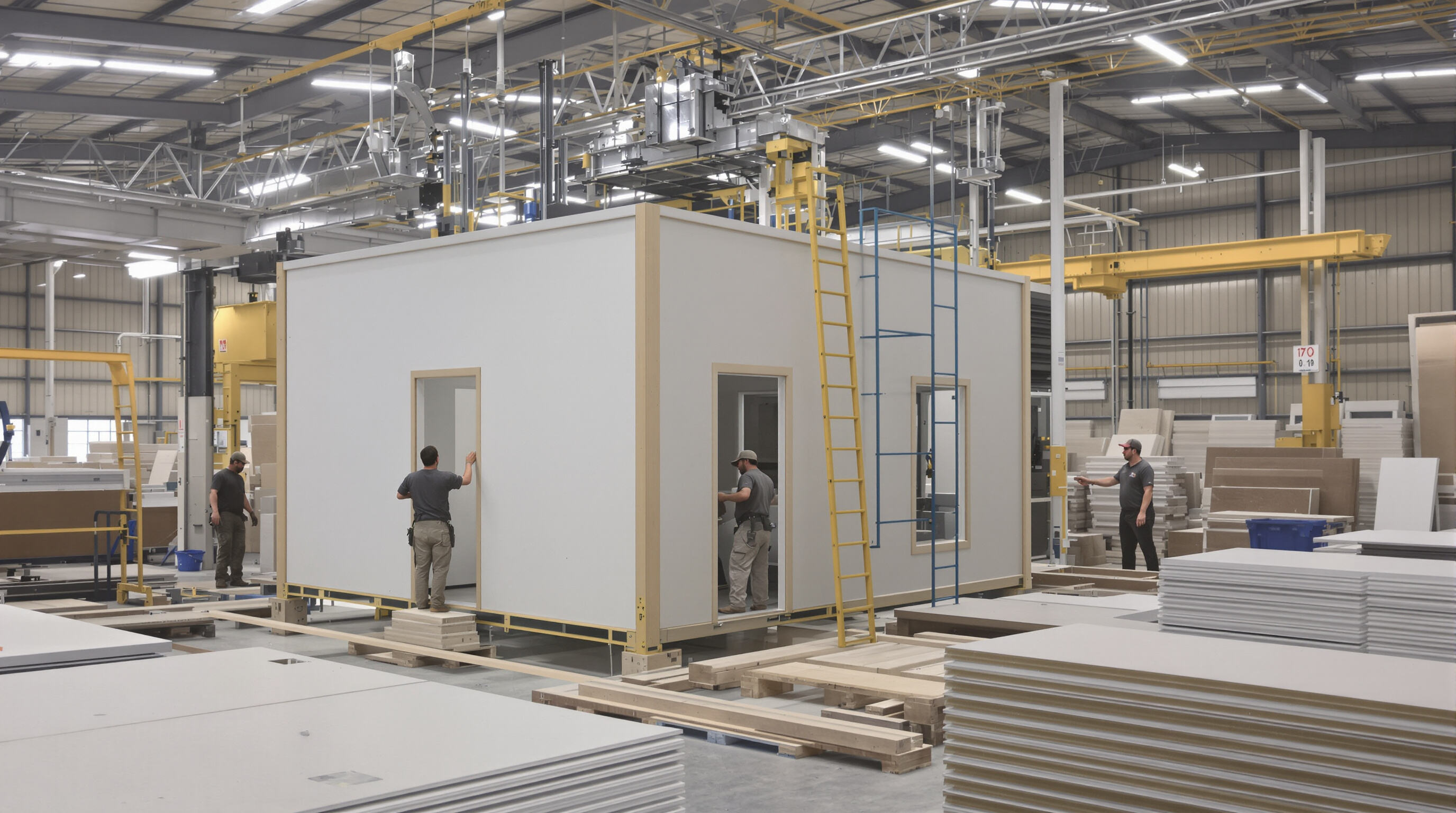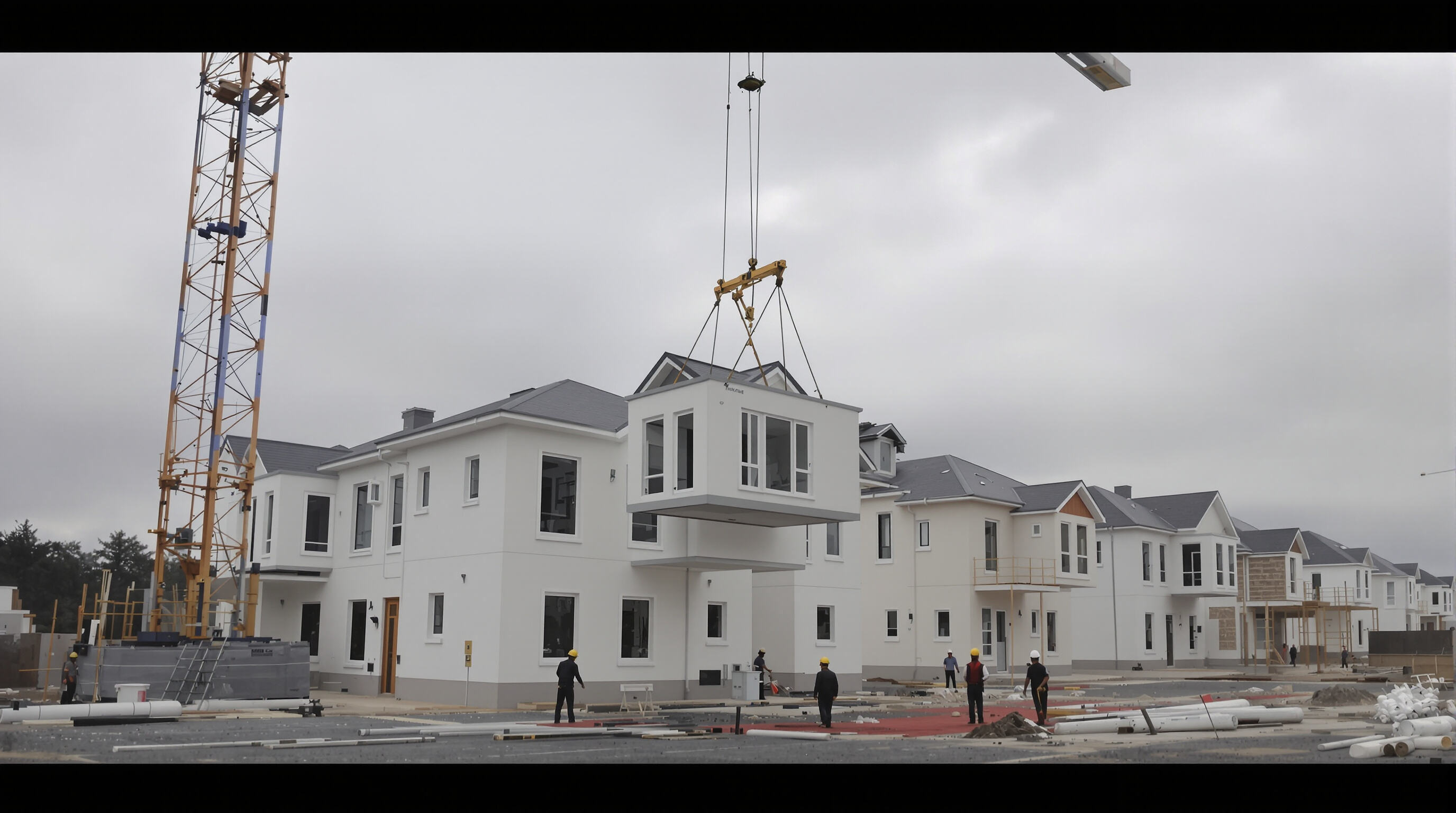The prefab construction approach is quite different from what we typically see in traditional building practices because it relies on factory-based production centers rather than on-site work. According to some recent reports from 2024 looking at housing markets, people who choose prefabricated homes generally spend about 10 to 25 percent less compared to those building conventionally. The savings come mainly from buying materials in bulk and avoiding those frustrating weather delays that plague so many construction sites. Traditional building still follows this old way where each trade has to wait for the previous one to finish, but with prefab everything happens at once. Foundations get poured while modules are being built right next door, which cuts down overall project time by roughly half in most cases.
Three primary factors govern prefab house cost variance:
Precision-cutting technologies in factory environments achieve 95–98% material utilization rates versus 70–85% on traditional job sites. This optimization reduces lumber waste by approximately 1.2 tons per 2,000 sq.ft home, directly lowering material procurement costs while minimizing environmental impact.

When building happens away from the actual site, many of those tricky jobs move into factories where everything runs smoother. Standard processes and machines do most of the work that would normally need expensive skilled workers. According to some recent research from 2024, putting together parts in factories needs about 40 percent less skilled hands compared to what we see at regular construction sites. Things that used to require lots of manual skill like welding pipes or putting up frames are now done by machines instead of people. Contractors can send their best folks to handle important coordination work on site while relying on pre-made pieces for all the complicated installation work that typically takes so much time and expertise.
Looking at numbers from mixed construction approaches reveals something interesting about prefab techniques. They tend to slash overall labor hours by around 30 to 50 percent when compared with standard building methods. Where we see the biggest difference is actually in those tricky electrical and mechanical setups that normally take so much time on site. When these components come pre-assembled, workers spend about 60% less time putting everything together. Another big plus for factory work? No waiting around for bad weather to pass or dealing with expensive overtime costs that can really eat into what companies budget for traditional construction projects.

When building components off site instead of on location, project timelines can actually get cut down anywhere from 30 to 50 percent according to McKinsey's findings back in 2023. Prefab houses end up costing less because factories produce parts with greater accuracy while multiple processes happen at once rather than sequentially. Traditional stick built homes often waste about 20% of their labor time dealing with bad weather interruptions or having to fix mistakes later on. Modular construction facilities keep going regardless since they're not dependent on outdoor conditions. This makes all the difference especially in places where there's only a short window each year for actual construction work. The money saved isn't just theoretical either. Real estate developers report saving between eight thousand and twelve thousand dollars worth of overhead costs for each month shaved off the foundation phase alone when using this method.
The time it takes to get people into buildings is changing how money flows through different industries. For multi family housing, developers who use prefabricated modules can have tenants moving in 4 to 6 months sooner compared to traditional construction methods. This means each apartment generates around $18,000 to $26,000 more revenue every year according to Dodge Data & Analytics research from last year. When we look at commercial properties, stores that adopt volumetric prefabs see their net operating income jump about 22% because they can start collecting rent much earlier. This gives them a real advantage in competitive markets where being first on the scene often means securing better rental rates and attracting quality tenants before competitors even break ground.
Recent analyses reveal prefab construction delivers 18–22% higher ROI over 10 years compared to traditional methods (McGraw-Hill Construction, 2023). This stems from standardized manufacturing reducing material waste by 30–40% and cutting rework costs by 65%—advantages rarely captured in conventional cost models.
While modular projects show 12–15% higher upfront costs, lifecycle data proves 25–35% savings in energy efficiency, maintenance, and renovation over 15 years (DOE Building Technologies Office, 2024). This disconnect persists as 68% of developers still prioritize short-term budgets over long-term operational savings.
Critics argue current ROI calculations undercount weather delays (avg. 23 project days lost annually) and skilled labor shortages (42% gap in tradespeople). However, hybrid models blending prefab components with onsite customization reduce these risks—modular hospitals achieved 91% budget adherence versus 63% in traditional builds (Prefab Innovation Institute, 2023).
The hybrid construction model splits work between factory settings and actual job sites. Most contractors find that moving around 70% of the tricky work into factories helps them cut down on needing those hard to find specialty workers without sacrificing the quality of what gets built. This setup really helps when there are worker shortages or bad weather hits the site. The whole process becomes much more predictable, which means projects tend to stay within budget and finish closer to schedule than traditional methods usually manage.
When using modular construction methods, builders can basically copy paste the same housing unit design from one location to another. This repetition cuts costs for follow-up projects by around 15 to 30 percent because they've already figured out what works best and can buy materials in larger quantities. The standardized parts approach also means less scrap sitting around unused, which brings down the overall price tag for prefabricated homes without compromising how strong they are. We're seeing this work really well in cities needing quick development solutions or areas hit by disasters where hundreds of similar houses need to go up fast.
Around two thirds of construction lenders have started favoring modular building approaches instead of conventional construction methods, based on recent 2024 research looking at commercial loan trends. Modular construction cuts down project timeframes roughly in half from when permits get approved until people actually move in. This means less money spent on temporary financing while waiting for completion, plus faster income streams coming in. For industries such as hospitals and schools, this matters a lot because getting delayed can cost them big bucks. Think about what happens when a new hospital isn't ready on schedule or a school building doesn't open when students need classrooms.
Prefab houses typically cost 10 to 25 percent less than traditional homes due to bulk material purchases and fewer weather delays. This results in significant savings over the project lifecycle.
By shifting work to a factory setting, prefab construction requires about 40 percent less skilled labor, reducing labor hours by around 30 to 50 percent overall, and less time is spent on tricky installations like electrical and mechanical setups.
Shorter construction cycles reduce interest expenses by 19–28% on average, as shown in prefab builds which feature lower overall timeline-related costs compared to traditional methods.
Prefab construction generally offers 18–22% higher ROI over 10 years compared to traditional builds. While critics discuss the challenges of weather delays and skilled labor shortages, many analyses show prefab construction is highly cost-effective in the long run.